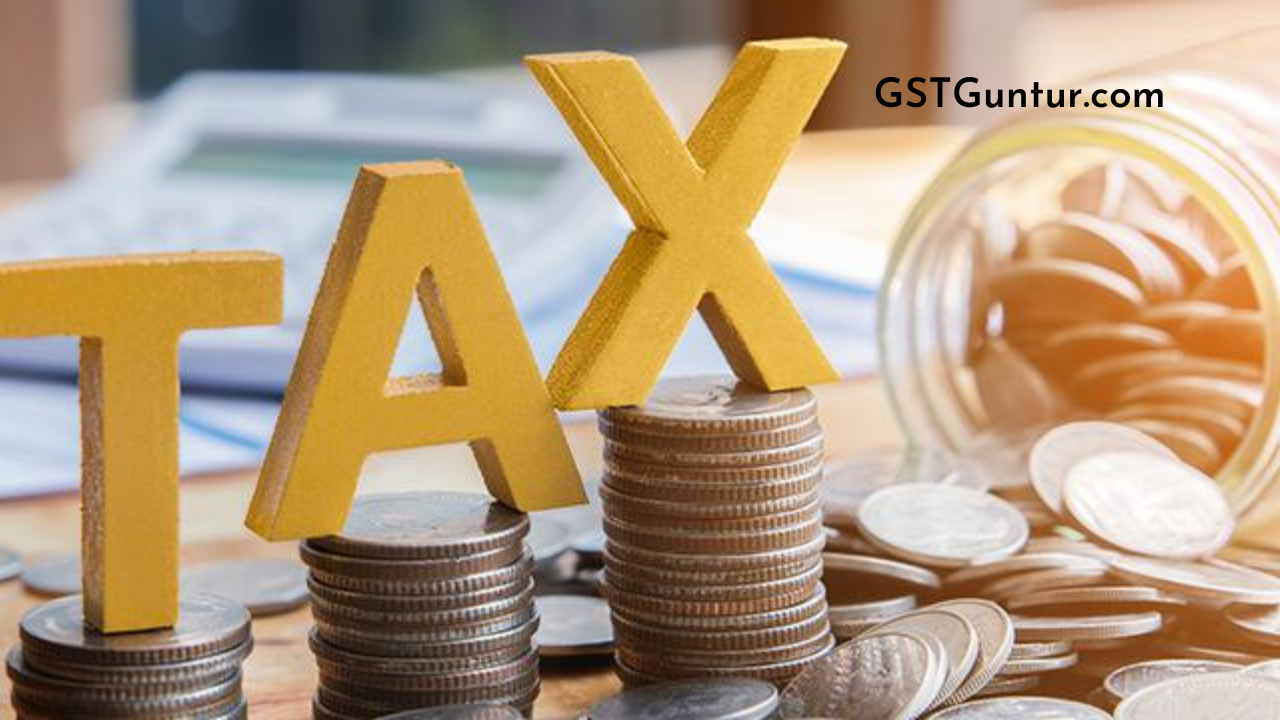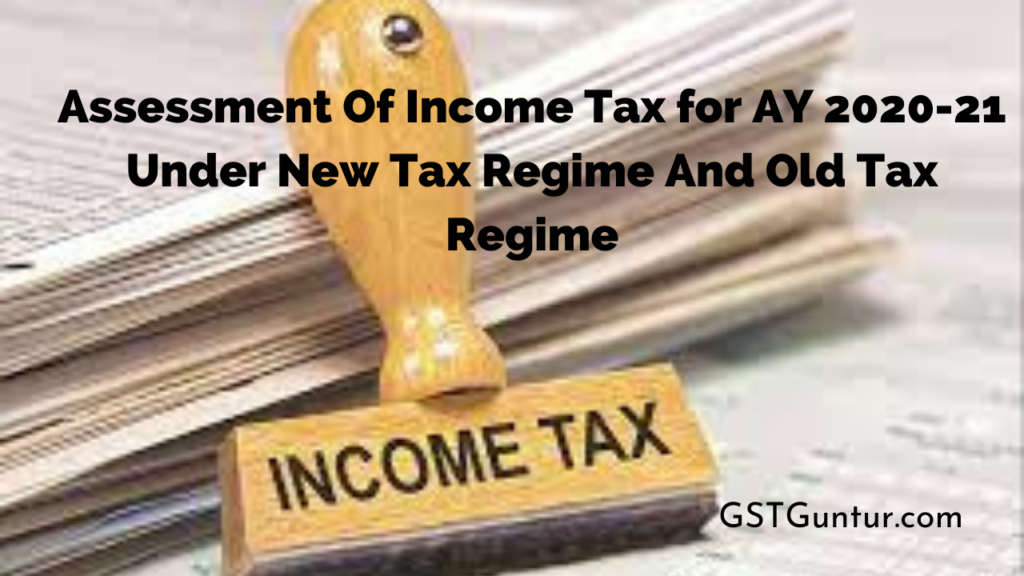Filing Of Income Tax Return for Financial Year 2019-20
Note: The last date for Income Tax Return filing has been extended to 31st December 2020 due to a delay in filing because of the COVID pandemic and lockdown procedures.
- A person does not have to fill ITR V if the Aadhaar Number is available and provided.
- Form ITR 2A is to be filed by a HUF or an individual who does not have any income from profession/business, income from foreign asset/any foreign income or capital gains. Taxpayers have to file ITR 2A for more than one house property but don’t have any capital gains.
- There will be only three pages in the Form ITR 2 and ITR 2A.
- Electronic Verification Code (EVC) has been introduced as an alternative for NOT sending ITR-V to Central Processing Centre (CPC), Bengaluru. For availing this feature, either Aadhaar based OTP can be used for which a person has to link his phone number with the Aadhaar number, or a person can log in through his bank account using his net banking facility or through Digital Signature. From the above-mentioned ways, any one of them can be availed by a person for filing an online income tax return to avoid sending a physical copy of ITR-V to Bengaluru.
- Taxpayers need to provide details of every bank accounts with Bank name, Account number and IFSC code. Details of accounts that are dormant or are not operational during the last three years are not required and therefore should not be provided.
- For any details of foreign travel, the Passport Number is to be provided if available to Forms ITR-2 and ITR-2A. Details of the trip or expenditure related to the trip are not to be furnished.
- Form ITR 1 is to be filed by individuals who come under exempted income without any ceiling (excluding agricultural income exceeding ₹5,000). In Form ITR 4S, a proposal of similar simplification for individuals/HUF.
- A foreign individual who is present in India on a student visa (expatriate), employment or business purposes are not liable to report any foreign assets acquired by him/her during the preceding years when he was non-resident and if any income is not derived from such assets during those relevant prior years.
Filing Income Tax Return for Financial Year 2019-20 Or Assessment Year 2020-21
Official Notification is available at the official Income tax website
PDF Forms can be downloaded for Income Tax Return Filing from the official website.
Necessary details of filing returns can be found on the website.
New And Old Tax Slabs for The Financial Year 2019-20 Or Assessment Year 2020-21
As per Chapter VI-A of the Income Tax Act, if an assessee’s gross total income before claiming deductions exceeds the maximum permissible amount, which is not chargeable to income tax, the assessee is obligated to furnish his/her return of income. There are two tax regimes now, the new and the old. The new tax regime was brought for those individuals who claim fewer deductions, and therefore they are charged less tax on their income. While the old tax regime charges higher tax but provides a lot of tax-saving deductions. Individuals are free to choose the tax regime that suits them better at the time filing Income Tax Return. Both the tax regimes benefit different classes of people, and therefore a person who can choose with higher tax-saving investments can opt for the old tax regime. In comparison, a person with lower investments will go for a new tax regime. However, the new tax regime provides a maximum deduction of ₹1.5 lakhs on investment in the Public Provident Fund (PPF).
The maximum permissible amount on which income tax cannot be charged is different for individual categories, which are as follows:
| Annual Income | Men And Women | Senior Citizens Between 60 To 80 Years | Super Senior Citizens Above 80 Years | |||
| New Tax Regime | Old Tax Regime | New Tax Regime | Old Tax Regime | New Tax Regime | Old Tax Regime | |
| Up to ₹2.5 lakhs | Exempt | Exempt | – | – | – | – |
| Up to ₹3 lakhs | – | – | Exempt | Exempt | – | – |
| From ₹2.5-5 lakhs/₹3-5 lakhs (senior citizen)/ up to ₹5 lakhs (super senior citizen) | 5% | 5% | 5 | 5% | Exempt | Exempt |
| From ₹5-7.5 lakhs | 10% | 20% | – | – | – | – |
| From ₹7.5-10 lakhs/From ₹5-10 lakhs (senior citizen and super senior citizen) | 15% | 20% | 20% | 20% | 20% | 20% |
| From ₹10-12.5 lakhs/Above ₹10 lakhs (senior citizen and super senior citizen) | 20% | 30% | 30% | 30% | 30% | 30% |
| From ₹12.5-15 lakhs | 25% | 30% | 30% | 30% | ||
| Above ₹15 lakhs | 30% | 30% | 30% | 30% | ||
Note:
For annual income between ₹2.5-3 lakhs and ₹3-5 lakhs, tax rebate under section 87a is applicable.
A surcharge is applicable as follows:
- Above ₹50 lakh, income tax of 10% on total income.
- Above ₹1 crore, income tax of 15% on total income.
- Above ₹2 crores, income tax of 25% on total income.
- Above ₹5 crores, income tax of 37% on total income.
- Health and education cess of 4% is applicable with the income tax liability for all cases.

E-Filing Videos Of Income Tax Return
A video (10 min) is provided by the Income Tax Department, which provides a run-through of the e-filing website, a short introduction on the e-filing process and how to register for e-filing.
CBDT: CBDT is under the Ministry Of Finance, Government of India, the Central Board of Direct Taxes (CBDT) is a division of the Department of Revenue. It provides crucial inputs for policies and planning of direct taxes in India. It is also responsible for governing the implementation of different direct tax laws through the Income Tax Department.
What Is The Importance Of The ELECTRONIC VERIFICATION CODE?
Electronic Verification Code is a unique 10-digit alphanumeric code sent to the phone number of a tax filer who is registered and has linked his/her phone number with Aadhaar while filing income tax returns online. This unique verification method is introduced to ascertain the identity of a tax filer while filing income tax returns online. Individuals availing of this method do not need to send a signed acknowledgement copy of ITR-V to the office of Central Processing Centre (CPC) of the Income Tax Department, Bengaluru. The whole process of the Income Tax Return will be complete when the verification process is done.
The various methods of verification as introduced by the Government are:
- Aadhaar Number based OTP on mobile
- Login through his/her bank account using his/her net banking facility
- Digital Signature
Individuals can opt for any of the above methods while filing income tax returns online to evade sending a physical acknowledgement copy of ITR-V to Central Processing Centre, Bangalore.
Changes In Income Tax Return Filing For AY 2020-21 or FY 2019-20
ITR-1
- Individuals have to report section-wise details of investments under Chapter VIA-B of the Income Tax Act which includes Section 80C (PPF, LIC, NSC, etc.), Section 80D (Mediclaim), Section 80G (Donation), etc. made in the period 01/04/2020 to 30/06/2020 (Assesses were allowed to make investments for the financial year 2019-20 as many of them could not invest due to COVID pandemic and lockdown).
- It is mandatory for individuals to file Income Tax Return even if he/she does not fall under any of the tax slabs if he/she deposits in one or more than one current bank account an amount more than ₹1 crore or incurred expenditure of more than ₹1 lakh on electricity consumption or more than ₹2 lakhs on foreign travel during the preceding year.
- After the Income Tax Return has been filed; the generated acknowledgement will not contain any details of total income, deductions claimed, tax liability, refundable amount, etc.
- Individuals need to furnish the employment nature, which can be Government, Public Sector Undertaking, Pensioners and Others.
- Under Section 80D, a new schedule has been introduced to calculate total eligible deductions for mediclaim premium with a list of different subheads. Several questions have been introduced for the assesses, such as:
- ‘Whether any of your parents is a senior citizen?’
- ‘Whether you or any of your family members (excluding parents) is a senior citizen?’
ITR-2
- Multiple schedules of ITR 2 have made it mandatory for the assessee to disclose the PAN of the tenant, second party, inter-alia, buyer etc.
- For the financial year 2019-20, ITR 2 form requires directors to disclose information regarding ‘type of the company’. A drop-down list will be provided of the type of companies, and any one of them is to be chosen.
- It has been made mandatory by CBDT for authorities to state Document Identification Number (DIN).
- Changes to ITR 2 has been made for claiming deductions under Section 80EEA and 80EEB in respect of interest on the loan for electric vehicles and interest on the house loan.
- Multiple bank accounts can be chosen by the assessee for the credit of tax refund.
ITR-4S
- Details of tax deduction claims for any payments or expenditure or investments that are made in the period 01/04/2020 to 30/06/2020.
- Returns that are filed under section have been separated between files in response to notices and normal filing.
- Under ‘Schedule BP’, gross receipts or turnover from the authorized electronic form are received before the specified date.
